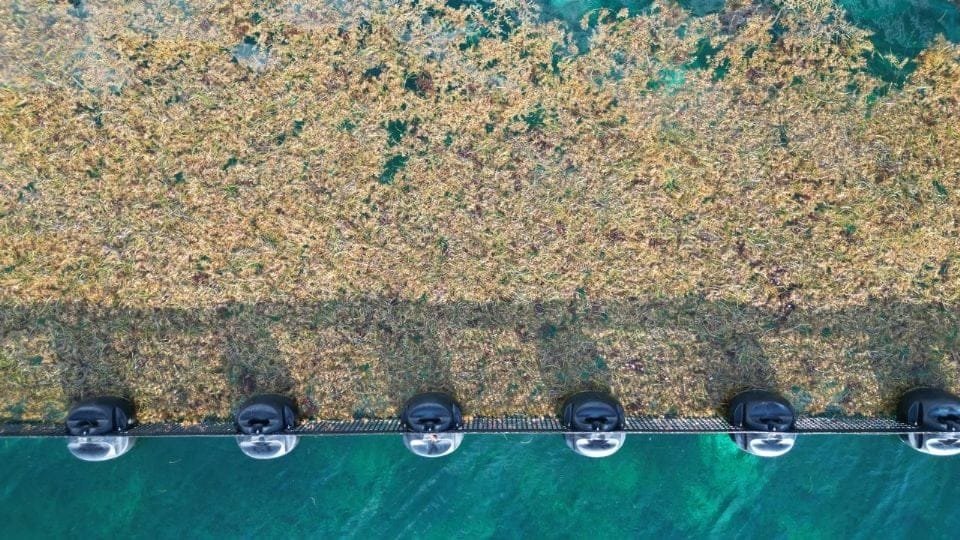Quintana Roo, Mexico — Governor Mara Lezama Espinosa has reaffirmed Quintana Roo’s commitment to implementing and strengthening interagency measures to control the influx of sargassum along its coastlines. From January to July of this year, more than 41,000 tons of the macroalgae have been collected from the state’s shores, according to Óscar Rébora Aguilera, head of the Secretariat of Ecology and Environment (SEMA).
Daily Efforts to Protect Beaches and Tourism
Rébora emphasized that daily cleanup and containment operations are critical to preserving the region’s beaches, safeguarding the local economy, and supporting families dependent on tourism. These efforts are part of the New Agreement for the Well-being and Development of Quintana Roo, a collaborative initiative involving the Secretariat of the Navy (SEMAR), the Federal Maritime-Terrestrial Zone (ZOFEMAT), municipal governments, three state agencies, the private sector, and civil society.
The strategy includes offshore containment barriers, coastal collection, specialized vessels, land-based cleanup brigades, and environmental monitoring. Playa del Carmen and Othón P. Blanco have reported the highest volumes of sargassum removal this year.
Monitoring and Long-Term Solutions
Recently, Governor Lezama Espinosa and Alicia Bárcena, head of the Secretariat of Environment and Natural Resources (SEMARNAT), conducted an inspection tour of Quintana Roo’s Sargassum Monitoring Center. The facility provides access to satellite data, enabling authorities to identify critical hotspots and implement targeted measures.
Additionally, plans were unveiled for a proposed Comprehensive Sargassum Sanitation and Circular Economy Center. The facility aims to develop long-term solutions for sargassum management and wastewater treatment, mitigating environmental and public health risks while promoting local economic growth.
A Global Challenge Requiring Shared Responsibility
Rébora stressed that sargassum is a global issue linked to climate change and marine pollution, necessitating a shared responsibility among all stakeholders. Currently, reactive measures such as oceanic and coastal sargassum vessels, along with containment barriers, remain the primary methods of control. Any stranded sargassum must be managed in accordance with SEMARNAT’s established protocols.
The state’s ongoing efforts underscore the urgency of addressing the sargassum crisis, which continues to threaten Quintana Roo’s vital tourism industry and coastal ecosystems.
Discover more from Riviera Maya News & Events
Subscribe to get the latest posts sent to your email.
